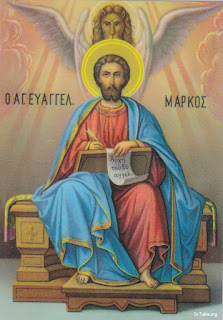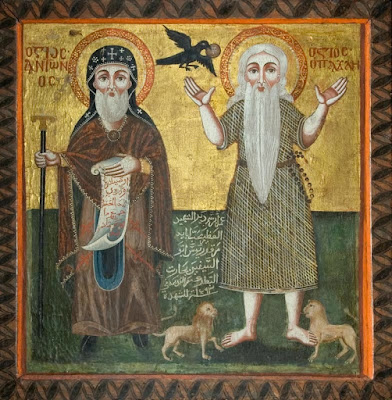THE FIRST GOSPEL:
It is agreed among scholars that the Gospel of Mark was the first of the Gospels, however they differed about the time it was written.Ibn Akbar estimated it to have been written in 45 AD.
St. Irenaeus stated that it was written after the martyrdom of both St. Peter and St. Paul, that is after 67 AD.
St. John Chrysostom said that it was written in Egypt, that is about 61 AD. It was written in Greek, which was a spoken language in both Egypt and Rome at that time and later it was translated to Latin and Coptic.
St. Mark wrote his Gospel for the gentiles, "The Romans":
Saint Mark gospel wasn't written for the Jews , as St. Matthew did.
He addressed the Gentiles and particularly the Romans, as he shared in the establishment of the church in Rome with Paul.
Following are some proofs:-
1 - He translated the Aramaic words in his writing, like the name of Boanerges, which meant the sons of thunder. [Mark 3 :17]
At the same time he didn't translate the name of Peter or other Latin words. He mentioned that "Corban meant "Gift" [Mark 7 : 11] and " Ephphatha" is be opened.[Mark 7 : 34]
He followed after the word "hell" an explanation that it was the fire that never be extinguished. [9 : 43] ; and the word "Abba", was followed by father. [Mark 14 : 36].
He explained that " Eloi, Eloi, lamasabachthani", meant "My God, my God, why have you forsaken me?". [Mark 15 : 34].
He had no need to translate, if he was writing to the Jews.
2 - Explaining the customs of the Jews and their places.
He explained what was meant by (defile), " And when they saw some of his disciples eat bread with defiled, that is to say, with unwashed, hands, they found fault.... as washing of cups, and pots, brazen vessels, and of tables." [Mark 7 : 2 - 4].
He explained ,"The first day of unleavened bread, when they slaughtered the Passover." [Mark 14 : 12] and explained, ".
And now when the even was come, because it was the preparation, that is the day before the Sabbath." [Mark 15 : 42]
He explained the value of the " two mites which make a farthing" and he didn't do that for the dinar which was Roman. [Mark 6 : 37]
When he talked about "Sadducees", he explained its meaning to the Roman readers, that they were the people who said 'no resurrection'. This was known of course to the Jews. When he spoke about the "Syrophoenician", he said "The woman was a Greek, 'a Syrophenian by nation'. That was the style the Romans understood.
As for the places, the Jews had no problem in understanding them. He defined the 'Jordan' as a river, [Mark 1 : 5], that 'mount of Olives' was over against the temple. [Mark 13 : 3] and both 'Bethphage' and Bethany were near Jerusalem. [Mark11 : 1]
3 - Little reference to the Old Testament:
The Book of Matthew quoted many references from the Old Testament, as it was written essentially to the Jews. On the other hand, St. Mark wrote his Book to the Gentiles with very limited little reference to the Old Testament compared to Matthew's and Luke's.













